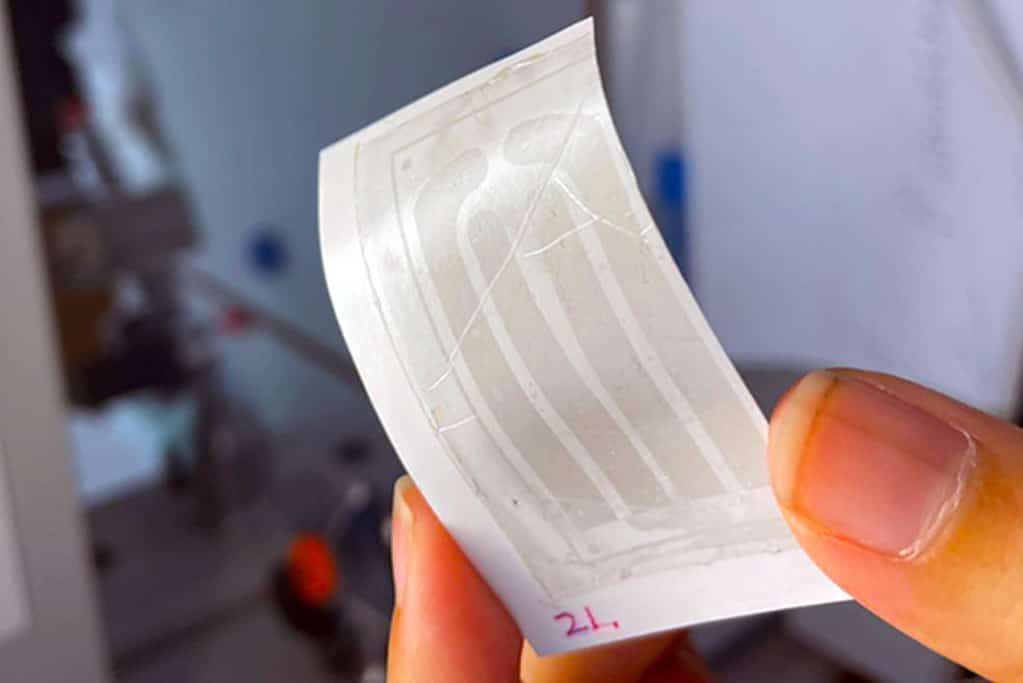Would you like a tattoo on your heart — and by heart, we don’t mean your chest skin but directly on the surface of your heart? We aren’t sure about tattoo artists, but scientists at the University of Texas at Austin (UT) and Northwestern University (NU) can fulfill that wish. It’s not for the sake of art, either. This heart tattoo can play a very important role.
The team of researchers have created a one-of-a-kind graphene tattoo that is placed directly onto the heart surface. This tatoo keeps your heartbeat in check, and also happens to be the world’s thinnest cardiac implant. So basically, you get a tattoo that also works like a pacemaker —- hell of a deal, right?

According to the researchers, every year nearly 300,000 people die in the US because of health problems linked to cardiac arrhythmia, a medical condition in which the heart of a patient beats irregularly because of anomalies in the heart’s electrical system. Doctors implant pacemakers or defibrillators in cardiac arrhythmia patients to keep their heartbeat in check. However, these rigid devices often end up damaging soft heart tissues, leading to infections, clots, bruises, and many other complications. The newly developed soft graphene tattoo can solve this problem.
“One of the challenges for current pacemakers and defibrillators is that they are difficult to affix onto the surface of the heart. Defibrillator electrodes, for example, are essentially coils made of very thick wires. These wires are not flexible, and they break. Rigid interfaces with soft tissues, like the heart, can cause various complications. By contrast, our soft, flexible device is not only unobtrusive but also intimately and seamlessly conforms directly onto the heart to deliver more precise measurements,” said Igor Efimov, senior study author and a professor of medicine at NU.
Graphene tattoos are biocompatible
The researchers realized the various health risks associated with conventional pacemakers and defibrillators and decided to create a heart implant that is softer, more flexible, lightweight, and safer than existing solutions.
Although scientists at UT have developed e-tattoos for monitoring heart, brain, and muscle activity in the past, this is different. Those tattoos can only be applied to the skin, and therefore their action is limited to providing data.
The study authors wanted something that could both measure and stimulate the electrical activity of the heart. For this purpose, they needed to place a tattoo directly on the heart’s surface. So they began searching for a suitable conductive material that could be safely implanted into the heart.
After performing multiple tests with different types of material, they found graphene as the most suitable option. Made of pure carbon, it is a soft, lightweight, and ultra-thin material that is 200 times more durable than steel. Graphene is already used in circuits, touchscreen displays, and various other electronic applications due to its high conductivity.
Moreover, it is optically transparent which means that by using a graphene tattoo, scientists can precisely track changes in the heart cells that are causing anomalies in the heartbeat and then apply electrical stimulations as required.
Efimov said, “For bio-compatibility reasons, graphene is particularly attractive, Carbon is the basis of life, so it’s a safe material that is already used in different clinical applications. It also is flexible and soft, which works well as an interface between electronics and a soft, mechanically active organ. He further added, “We can essentially combine electrical and optical functions into one bio interface because graphene is optically transparent, we can actually read through it, which gives us a much higher density of readout.”
But how does a graphene tattoo fix heart rhythm?
The next step was to create a tattoo out of graphene, place it on the heart, and check if it really works as expected. To make the tattoo, the researchers first put a piece of a graphene electrode inside a thin silicone membrane and then covered it with gold tape measuring 10 microns in thickness. This arrangement led to the birth of a tattoo patch (100 microns thick) that was thinner than a hair strand but looked similar to a temporary tattoo used by kids.
If you’ll dig deep into the tattoo components, you’ll notice that the silicone membrane inside the tattoo has a tiny hole that allows it to establish direct contact with the graphene electrode, and its gold tape actually acts as a connection line between graphene and an external circuit that monitors and stimulates the heart’s electrical activity. This interconnected setup allows the implant to function smoothly.
The researchers tested this tattoo implant on live rats and mice hearts for 60 days. During the tests, the graphene electronic tattoos (GETs) successfully achieved cardiac actuation in mice and even treated cardiac arrhythmia in rats.
The study authors noted, “This is the first-time graphene electrodes have been used to successfully treat a life-threatening heart rhythm disorder.” They further added, “Results from the electrophysiology, optical mapping, and optogenetics studies together indicate that the lightweight and transparent GET-electrodes allow seamless interfacing with cardiac tissue yet efficient light transmission for precise and simultaneous optoelectronic recording and actuating of cardiac bioelectrical activities.”
GETs have only been tested on animal hearts so far and further research is required to confirm their effectiveness as cardiac implants for humans. Hopefully, in future studies, scientists will greatly improve this proof-of-concept work, and cardiac arrhythmia patients will finally have a much safer and better implant option.
The study is published in the journal Advanced Materials.






